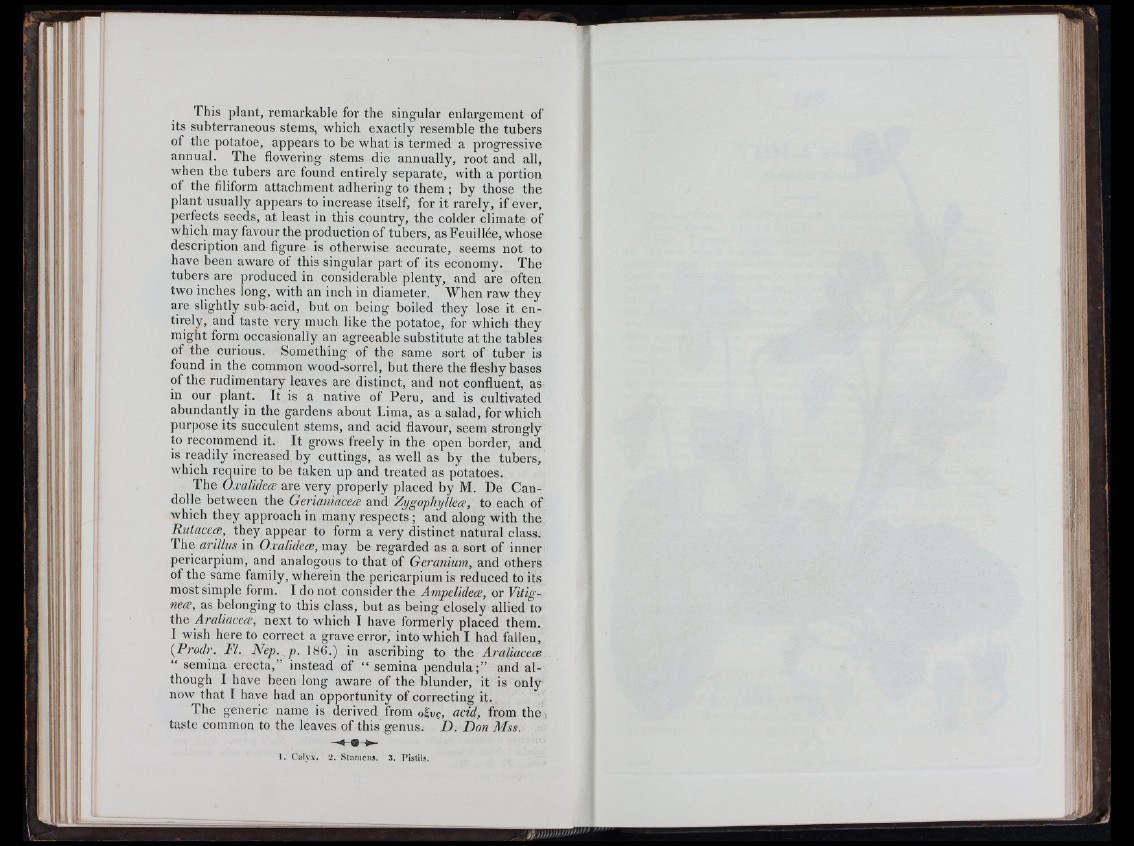
I I
i l l
This plant, remarkable for the singular enlargement of
its subterraneous stems, which exactly resemble the tubers
of the potatoe, appears to be what is termed a progressive
annual. The flowering stems die annually, root and all,
when the tubers are found entirely separate, with a portion
of the liliform attachment adhering to them; by those the
plant usually appears to increase itself, for it rarely, if ever,
perfects seeds, at least in this country, the colder climate of
which may favour the production of tubers, as Feuill6e, whose
description and figure is otherwise accurate, seems not to
have been aware of this singular part of its economy. The
tubers are produced in considerable plenty, and are often
two inches long, with an inch in diameter. When raw they
are slightly sub-acid, but on being boiled they lose it entirely,
and taste very much like the potatoe, for which they
might form occasionally an agreeable substitute at the tables
ot the curious. Something of the same sort of tuber is
found in the common wood-sorrel, but there the fleshy bases
of the rudimentary leaves are distinct, and not confluent, as
in our plant. It is a native of Peru, and is cultivated
abundantly in the gardens about Lima, as a salad, for which
piir[)ose its succulent stems, and acid flavour, seem strongly
to recommend it. It grows freely in the open border, and
is readily increased by cuttings, as well as by the tubers,
which require to be taken up and treated as potatoes.
The Oxalideai are very properly placed by M. De Candolle
between the Gerianiacece and Zi/gophyllece, to each of
which they approach in many respects; and along with the
RutacecB, they appear to form a very distinct natural class.
The arillus in Oxalidece, may be regarded as a sort of inner
pericarpium, and analogous to that of Geranium, and others
of the same family, wherein the pericarpium is reduced to its
most simple form. I do not consider the Ampelidea:, or Vitig-
■nece, as belonging to this class, but as being closely allied to
the Araliaccce, next to which I have formerly placed them.
I wish here to correct a grave error, into which I had fallen,
{Prodr. FL Nep. p . 186.) in ascribing to the Araliaccce
“ semina erecta,” instead of “ semina pendula;” and although
I have been long aware of the blunder, it is only
now that I have had an opportunity of correcting it.
The generic name is derived from o%vq, acid, from the
taste common to the leaves of this genus. D. Don Mss.
■iMI
m
I. ( l a l y x . 2. St i imcnu. 3. Pis l i l s .
.....